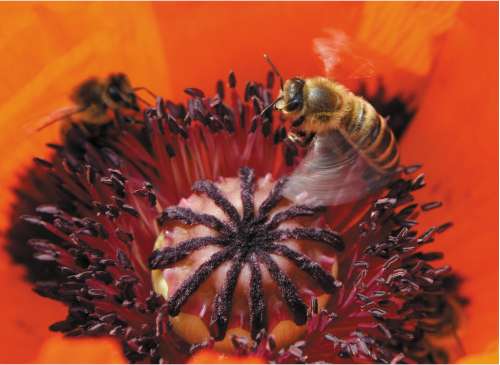Bumblebees set new insect record for high-altitude flying
Scientists reveal remarkable ability of mountain-dwelling bumblebees to fly in air so thin it would kill a human

The origin of the notion that bumblebees fly in defiance of the laws of aerodynamics is lost in scientific history. But new research suggests that, despite their apparent physical drawbacks, bumblebees are among the finest flyers of the insect world.
Bumblebees have been discovered on Mount Everest at more than 5,600 metres (18,000ft) above sea level. In scientific tests, several of the bees flew successfully in a flight chamber which recreated the thin air of 9,000m (29,528ft) above sea level, higher than the 8,848m summit of the world's highest mountain. This is thought to be a record for any insect species.
Scientists behind the research also established that some bumblebees have been living above 4,000m for prolonged periods, with the discovery of a bumblebee nest at 4,400m in the Hengduan Mountains of Sichuan Province, China.
Dr Michael Dillon, a biologist at University of California at Berkeley, has been studying the high-altitude bees found in the mountains, which are on the eastern edge of the Himalayas, near Tibet. He said: "We collected bees at 4,000m, put them in a chamber and sucked air out of it to simulate high altitudes. We took them to 9,000m and they still flew – that's above the height of Everest."
To put the feat into context, the summit of Mount Everest is considered right at the limit of human tolerance and if it were just 100m higher, it would be beyond the reach of climbers. Those venturing above 8,000m are said to be entering the "death zone".
At 9,000m, air pressure is about a third of that at sea level so it is harder to fly, with less air for wings to beat against; it's also harder to breathe. And all bumblebees have tiny wings, relative to their body size. Dr Dillon added: "It's pretty amazing. The forces necessary for flight are directly related to air density. They have a remarkable capacity."
Dr Dillon said he was also surprised by the bumblebees' ability to maintain a high body temperature.
"One thing we expected was that high-elevation bees would be able to fly at lower muscle temperatures, but we have done a bunch of measurements and they are as hot as lower-altitude bees when flying around," he said. "We are in woolly sweaters and hats, shivering, and these bees are buzzing around at 44C. Catch them and they are hot to the touch."
Dr Charles Clarke, the president of the British Mountaineering Council, said the bees' achievement was all the more remarkable considering that humans can spend only a few days above 7,000m before their bodies start to deteriorate. "The thing that surprises me is the atmospheric pressure is so low at 9,000m and the amount of energy they would have to expend to beat their little wings ... it's extraordinary."
The researchers are planning to return to China in the next few weeks to further investigate just how the bees fly at such height and whether it takes a toll on their health. "We have shown they are able to fly at this incredible range of elevations and now what we want to know is how much it costs them," Dr Dillon said. "They are likely to be burning a ton of energy to maintain flight."
Join our commenting forum
Join thought-provoking conversations, follow other Independent readers and see their replies
Comments